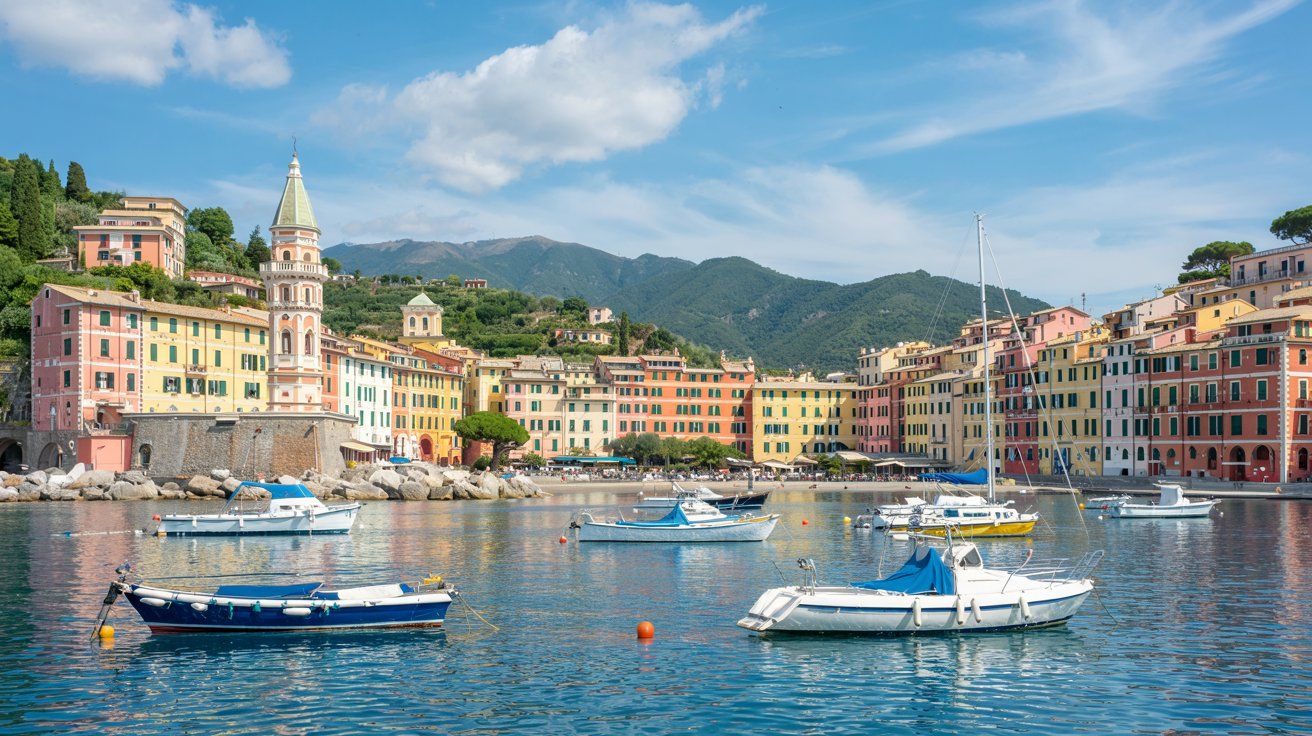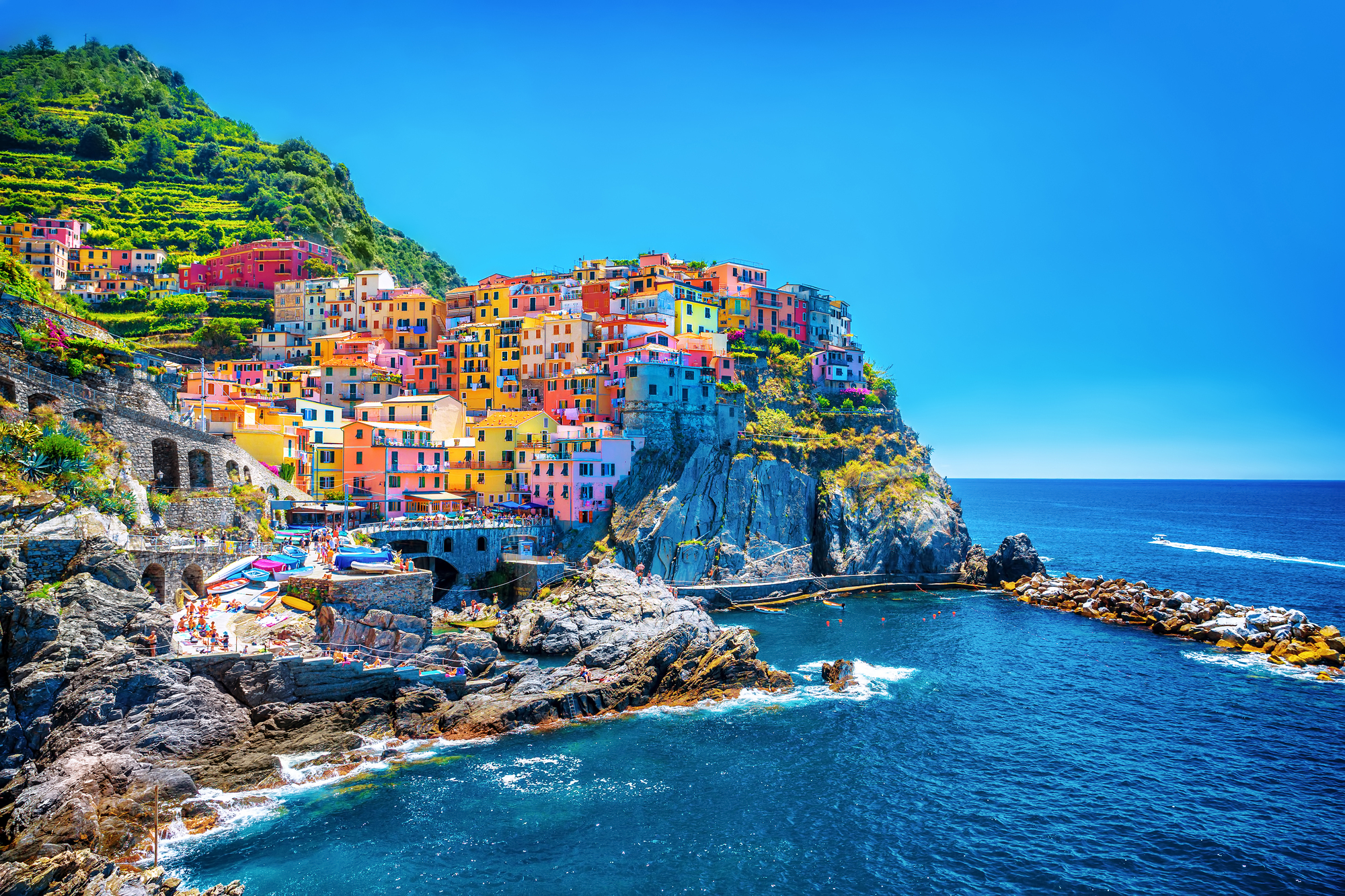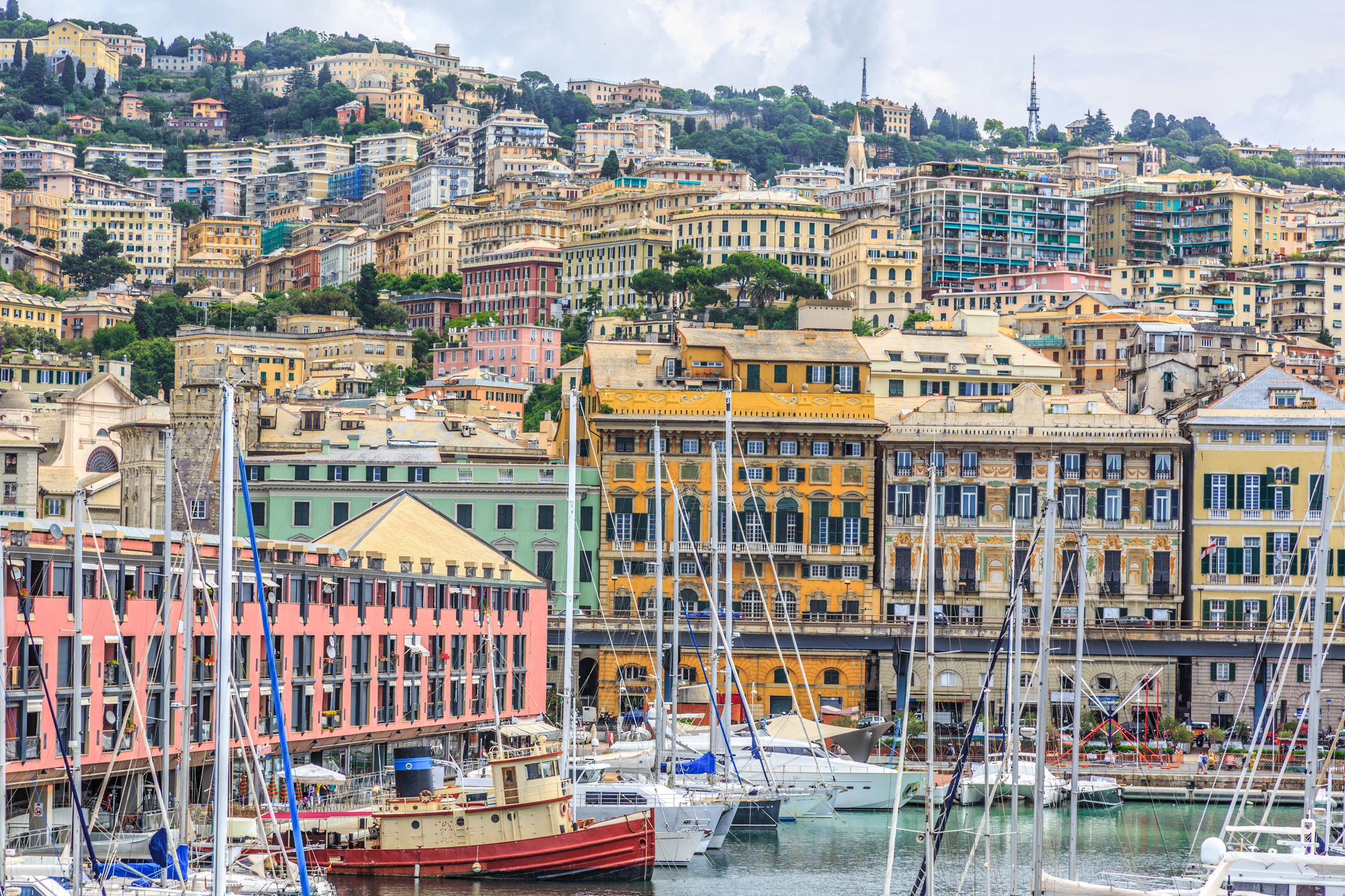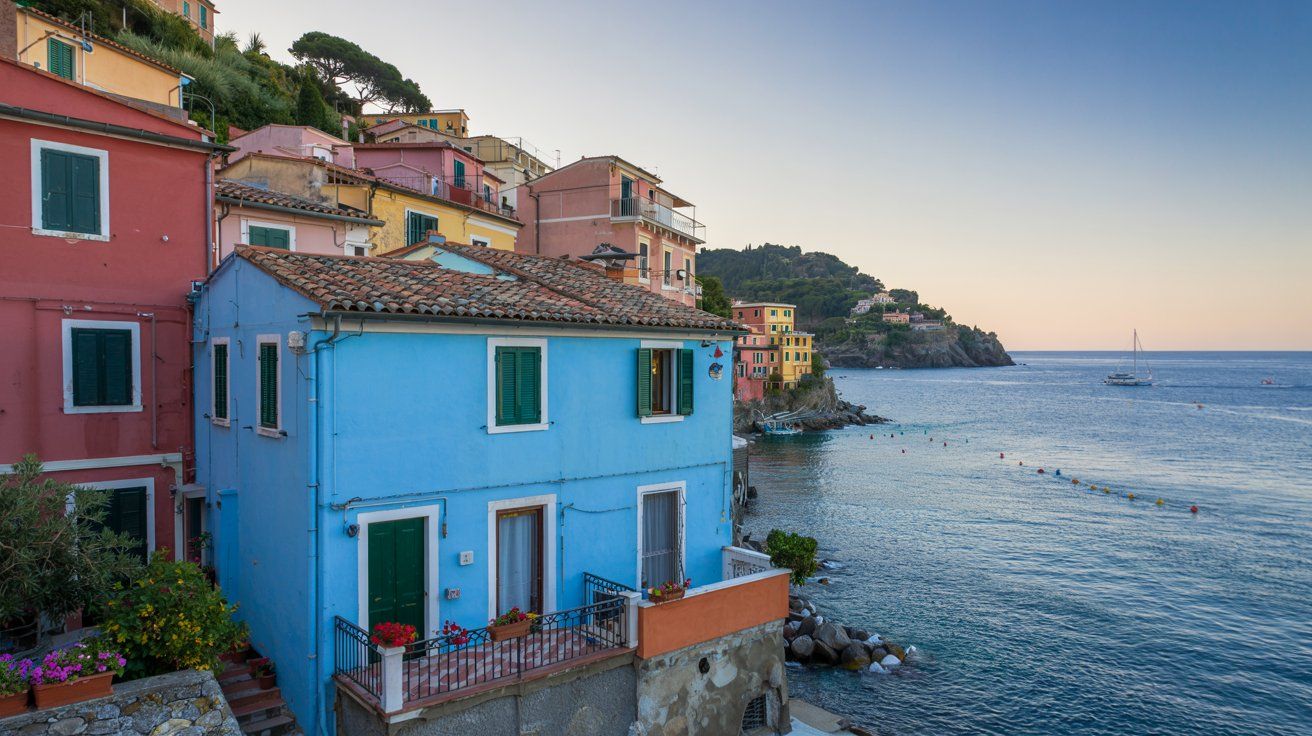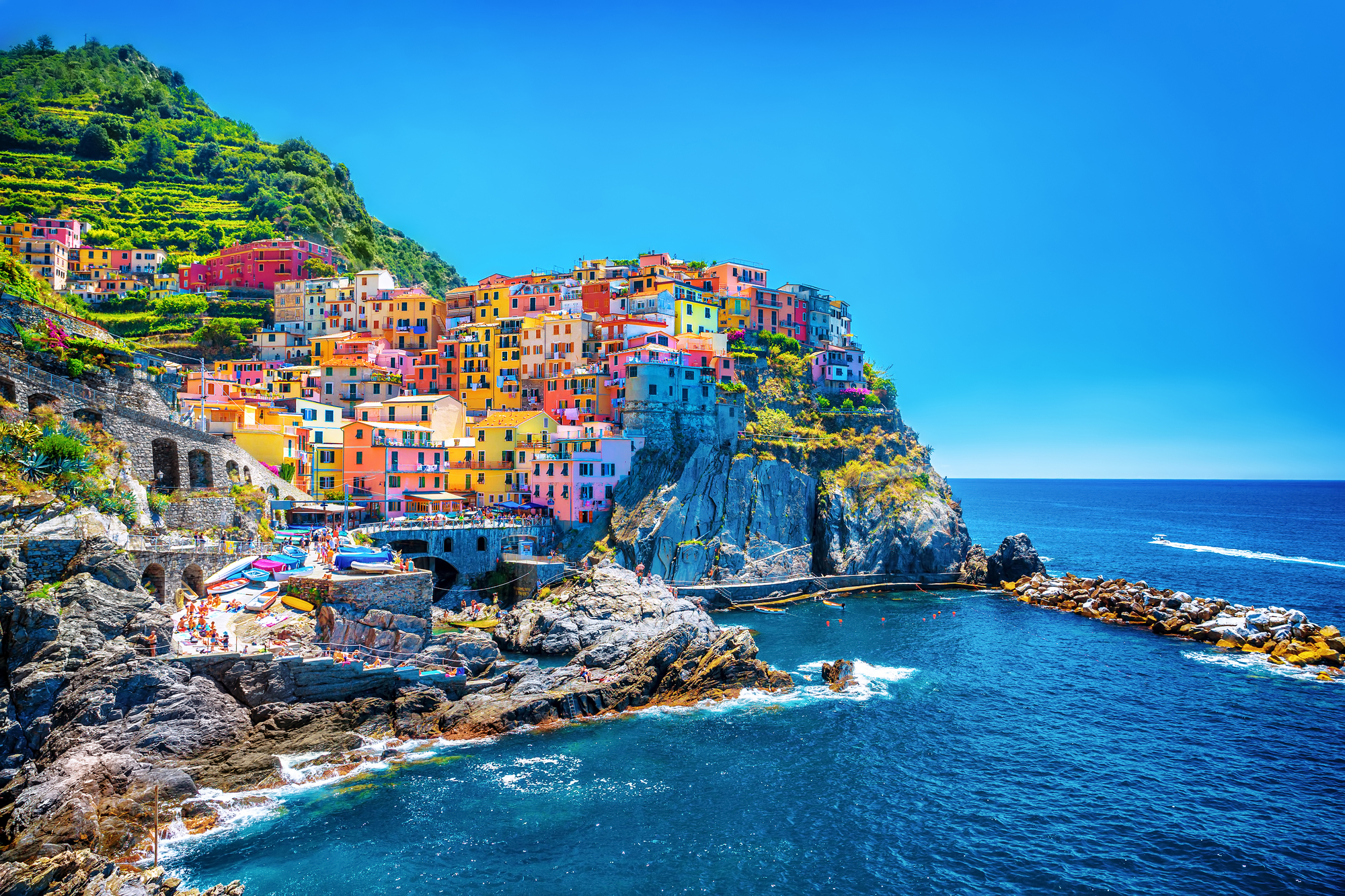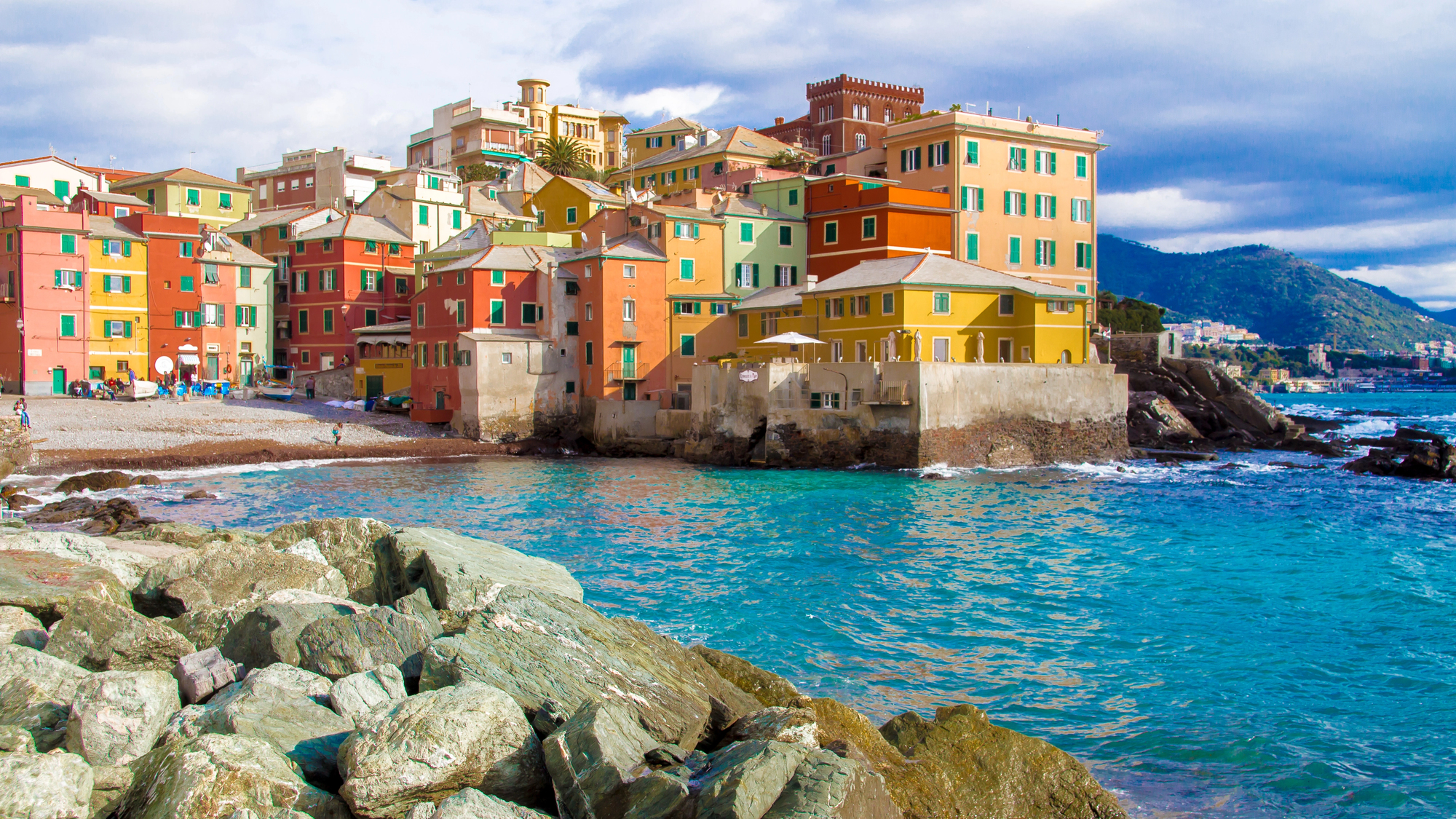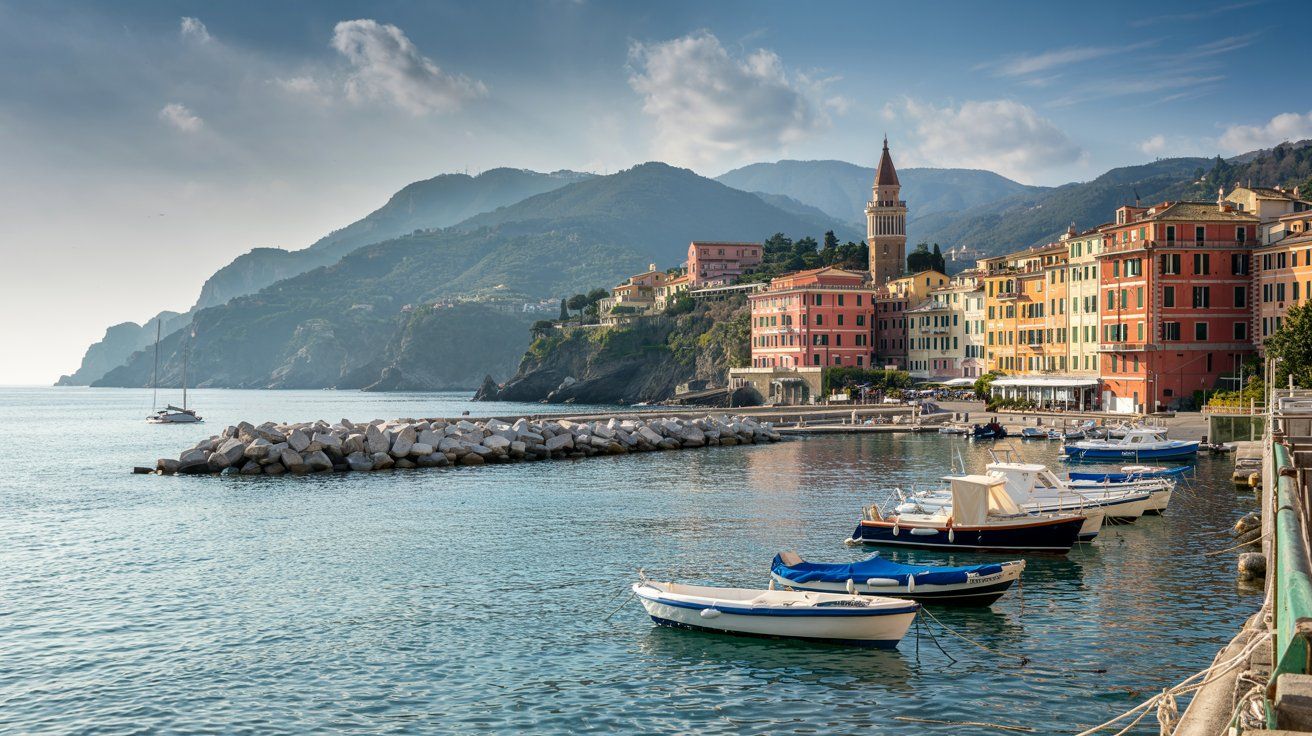Standing proudly as one of Genoa’s most iconic medieval structures, Porta Soprana (also known as Porta Sant’Andrea) welcomes visitors with its impressive twin towers. Built between 1155 and 1158, this magnificent stone gateway served as the main eastern entrance to the ancient city. The gate represents one of the finest examples of medieval architecture in Genoa and offers a compelling glimpse into the city’s rich defensive history.
As you walk through this beautifully restored gateway, you’ll step back in time to an era when Genoa was a powerful maritime republic. The Porta Soprana underwent major restoration work in the early 20th century, returning it to its former glory after centuries of wear. Today, it stands as a symbol of the city and marks the boundary of Genoa’s historic medieval center.
Get a discount of 15% to 70% on accommodation in the Italian Riviera! Look for deals here:
Italian Riviera Hotels, Apartments, B&Bs
When you visit Porta Soprana, take time to explore the surrounding area, including the nearby house of Christopher Columbus. The gate sits at the top of the Plain of St. Andrew, offering excellent views and photo opportunities. You can easily incorporate this landmark into a walking tour of medieval Genoa, as it’s conveniently located near other important sites in the city center.
History Of Porta Soprana
Porta Soprana stands as one of Genoa’s most impressive medieval structures, built around 1150 as part of the city’s defensive system known as the Barbarossa walls. These walls were named after Holy Roman Emperor Frederick Barbarossa, who posed a threat to the city at that time.
The gate served as the main eastern entrance to Genoa, overlooking the plane of Sant’Andrea (named after a nearby monastery). With its two imposing cylindrical towers, it represented both protection and a welcoming gesture to travelers approaching from the east.
Over centuries, Porta Soprana witnessed Genoa’s transformation from a medieval maritime republic to a modern city. The area around the gate holds special significance as it’s near the house of Christopher Columbus, Genoa’s most famous son. Though Columbus was born in Genoa, this house represents his connection to the city.
By the 19th century, the gate had fallen into disrepair as the city expanded beyond its medieval boundaries. Fortunately, major restoration work conducted between the 19th and 20th centuries helped return Porta Soprana to its former glory.
Today, you can visit this well-preserved example of medieval defensive architecture and imagine yourself as a traveler in ancient times, passing through this magnificent gateway into the busy streets of medieval Genoa. The careful restoration allows you to appreciate the gate much as it would have appeared centuries ago.
What To See In Porta Soprana
Porta Soprana stands as one of Genoa’s most impressive medieval structures. The gate features two massive circular towers that dominate the skyline and serve as a perfect introduction to the city’s rich history.
When visiting this iconic city gate, take time to admire the detailed stonework that has survived since the 12th century. The craftsmanship showcases the architectural skill of medieval Genoese builders.
You’ll want to climb to the top of the towers for breathtaking city views. From this vantage point, you can see the layout of medieval Genoa and appreciate how the city developed around its ancient walls.
Located at the top of the Plain of St. Andrew, Porta Soprana marks the boundary of the old city. It’s positioned not far from Christopher Columbus’ house, making it easy to visit both attractions in one trip.
The area surrounding the Soprana city gates offers excellent photo opportunities. The contrast between the ancient stone structure and the bustling modern city creates a fascinating visual experience.
Don’t miss examining the Latin inscriptions on the gate. These historical texts provide insight into medieval Genoa’s civic pride and military strength.
As you walk through the massive arched entryway, imagine the countless travelers who passed through these same gates over centuries. This experience connects you directly to the history of this fascinating Italian port city.
How To Get To Porta Soprana
Reaching Porta Soprana in Genoa is straightforward, with several transportation options available to you. This ancient gateway sits in the heart of Genoa’s historic center, making it easily accessible for visitors.
If you’re arriving by air, fly into Cristoforo Colombo Airport, Genoa’s main international airport. From there, you can take the Volabus shuttle directly to the city center. The journey takes about 30 minutes and drops you near Piazza De Ferrari.
From Piazza De Ferrari, simply walk along the short Via Dante heading south until you reach Piazza Dante. The twin towers of Porta Soprana will be visible as you approach the plaza.
If you’re already in Genoa, the city’s efficient public transportation system can help you get close to the site. The Metro has stops at De Ferrari and San Giorgio, both within walking distance of Porta Soprana.
Walking is actually the best way to experience Genoa’s historic center. The narrow medieval streets (caruggi) aren’t always accessible by vehicle, and the short distances make walking practical.
You’ll find Porta Soprana on Via di Porta Soprana, conveniently located near other major attractions in Genoa’s old city. This makes it easy to include in a walking tour of the historic center.
For those who prefer guided experiences, several walking tours of Genoa include Porta Soprana on their itineraries, providing historical context along with easy navigation through the city’s ancient streets.
Porta Soprana Visitor Information
Planning a visit to Porta Soprana in Genoa? Here’s what you need to know before you go.
The impressive medieval gate is open daily from 9 AM to 6 PM. It’s always best to check the official website before your visit as hours may change seasonally or for holidays.
You can explore both towers of this historic entrance to the city. The ancient staircase allows you to climb to the top for a unique perspective of Genoa.
Porta Soprana stands at the top of the Plain of St. Andrew (Piano di Sant’Andrea), making it easy to locate. It’s not far from the city center and can be included in a walking tour of medieval Genoa.
The gate, also known as Porta Sant’Andrea, is one of the symbols of Genoa. It features two impressive towers connected by a pointed arch, showcasing remarkable 12th-century architecture.
The site underwent restoration in the early 20th century, preserving its historical significance while making it accessible to visitors.
When visiting, wear comfortable shoes as you’ll be climbing stairs if you want to reach the towers’ top. The views are worth the effort!
Porta Soprana is an excellent starting point for exploring Genoa‘s historic center. From here, you can easily walk to other important landmarks in the city.
Where To Stay Near Porta Soprana
Genoa offers excellent accommodation options near the historic Porta Soprana gates. For travelers seeking luxury, the Melia Genova consistently receives high ratings from visitors exploring this medieval landmark.
The NH Genova Centro provides another well-rated option within easy walking distance of Porta Soprana. Its central location makes it perfect for sightseeing throughout Genoa’s historic center.
For those wanting a unique experience, the Sublimis Boutique Hotel offers adults-only accommodations with distinctive character. Many rooms in these properties include modern amenities like air conditioning, Wi-Fi, and TVs for your comfort.
If you prefer more space and independence, holiday apartments in the Italian Riviera provide excellent alternatives. These typically feature practical amenities such as washing machines, refrigerators, and work desks to make your stay more comfortable.
The Hotel Bristol Palace stands out with its impressive 9.0 rating from over 6,000 reviews. It combines elegant surroundings with convenient access to Porta Soprana.
When booking accommodations, look for properties offering heating for winter visits and air conditioning for summer comfort. Many hotels and apartments near Porta Soprana include bidets, which are standard in Italian bathrooms.
Room prices start from around $80, with luxury options ranging upward from $107 per night. For the best rates and availability, booking in advance is recommended, especially during peak travel seasons.
Things To Do Near Porta Soprana
When visiting Porta Soprana, you’ll find several outstanding attractions within walking distance. This historic gate serves as an excellent starting point for exploring Genoa’s treasures.
Christopher Columbus’ House sits just steps away from the gate. This modest museum offers a glimpse into the life of Genoa’s famous navigator and is worth a quick visit.
The Palazzo Ducale (Doge’s Palace) is a must-see nearby landmark. Once home to Genoa’s doges, this impressive building now hosts art exhibitions and cultural events throughout the year.
For sea lovers, the Aquarium of Genoa is just a short walk from Porta Soprana. As Italy’s largest aquarium, it houses an impressive 12,000 marine animals and provides an educational and entertaining experience for visitors of all ages.
The charming narrow streets called “caruggi” surround Porta Soprana. You can explore them independently or join a Guided Walking Tour to learn about their rich history and hidden gems.
When the weather is nice, take a relaxing stroll along Corso Italia, the oceanside promenade where locals enjoy their traditional passeggiata (late afternoon walk).
Wine enthusiasts might enjoy visiting nearby tasting rooms to sample regional varieties from the Langhe region, known for excellent Italian wines.
For a unique perspective of the historic center, consider booking a Segway Tour that covers the caruggi and surrounding attractions in about 2.5 hours.
Get a discount of 15% to 70% on accommodation in the Italian Riviera! Look for deals here:
Italian Riviera Hotels, Apartments, B&Bs


